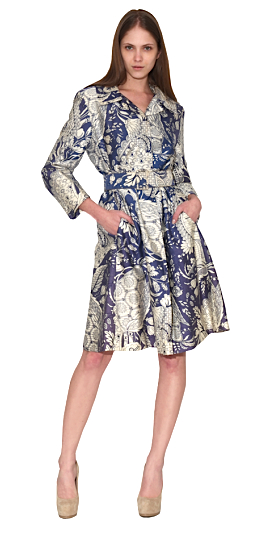This weekend I had the pleasure of meeting a lovely older couple who were avid antiquers and we engaged in a conversation about what life’s like as an antiques dealer and just how quickly one’s passionate collecting can turn into a full-time business.
Then we got on the delicate topic of pricing and they regaled me with an entertaining tale.
A tale that starts with an ugly vase.
This ugly vase belonged to Party A’s deceased wife and had been in her family for generations. It had also been in Party A’s house long enough. He’d always hated the vase and thought it was u-g-l-y.
So he set it out at a weekend yard sale and slapped on a $15 price tag thinking, what the heck, maybe somebody would like it.
And somebody did. We’ll call him Party B.
Party A could hardly believe it!
Party B had actually parted with $15 of his hard-earned money for that ugly vase! Party A quickly pocketed his $15 before the buyer changed his mind and was thrilled to have that ugly vase gone from his life forever.
Party B was an auctioneer. He put the vase up for sale at his next auction and it sold for $120 to Party C.
What a nice little profit for such an ugly vase, he thought.
Party C also happened to be an auctioneer but he ran a much larger and better attended auction that Party B. This time when he offered the ugly vase at auction it sold for $325 to Party D.
That was an even bigger profit on the ugly vase than Party B had made!
Party D was a dealer and he immediately took the vase to a high-end antiques store in LA that often bought items from him. The owner of the antiques store, Party E, was drooling to pay $700 for “such a beautiful vase from this manufacturer in such fine condition.”
And later that day, the ugly vase (or beautiful vase, depending on the eye of the beholder) was seen displayed in the window of Party E’s antiques store with a price tag of $3500.
A few days later, Party F, a well-known interior designer, was scouting in Party E’s store and purchased the vase for $3500 which he then re-sold to Brad Pitt for $12,000!
Now, please note that this is my best recollection of the couple’s story and the prices that they shared with me over the weekend. I, of course, have no way of verifying if any of this is true or just one of those urban myths-in-the-making, but it certainly rings true for me as I’ve heard many similar stories over the years and I’m part of this vintage and antiques pipeline myself.
For instance, I know that items I’ve purchased at auction have been worn by the celebrity clients of a certain famed stylist (initials RZ) who regularly pulled items from a Beverly Hills vintage boutique where I consigned my monthly vintage finds. And I know those celebrities paid waaaay more for those dresses than the price tag at the store.
So you can see that wherever you sit on this vintage and antique food chain will determine the prices that you can command or will end up paying.
Those folks with celebrity connections and lots of knowledge and experience sit at the top and can command the highest prices. Think of them as the lions of the jungle.
Those people with little knowledge and experience and who are consumers, not professionals, sit at the very bottom. Think of these folks, like Party A in this story, as the wounded antelope (and these folks can often fall prey to the hungry lions).
But does it make sense now why you might see similar items on two different vintage websites with very different prices?
I mean I remember once seeing the exact same Lilli Ann suit offered online at two different venues for $99 and $895!
The price all depends on where a seller is in the vintage and antique pipeline and who their clients happen to be. Or, to continue my jungle analogy, when they get to drink at the watering hole and how much they’re willing to pay to avoid being eaten.
If you’re a buyer, you want to buy as close to the bottom of the pipeline as possible to get the best price.
If you’re a seller, you want to sell to buyers as close to the top of the pipeline as possible to get the best price.
Finally, a Facebook friend recently posted about her amazing $1 Thierry Mugler find at a thrift store in Utah. So that’s the beginning of the pipeline, right?
So while this gal may just keep this find for herself, since she’s a dealer she’ll probably sell it for a hefty profit to her local vintage shop who, to expose it to a larger audience, will put it up for auction on eBay where it will be won by a NYC vintage dealer who will show it to an LA costume designer who will feature it on a famed celebrity in a film that goes on to win an Academy Award prompting this $1 Mugler to command a 6-figure winning bid when it is later sold at a specialty auction and acquired by a museum for its permanent collection.
But you, as a consumer, have both the power and the opportunity to interrupt this chain.
If you’re willing to pay a premium NOT to have to troll through thrift shops you can snatch this Mugler on eBay.
If you’re willing to pay a premium NOT to have to page through thousands of eBay auctions, you can intercept a Mugler like this at an upscale vintage boutique.
If you’re willing to pay a premium then you don’t have to drag yourself out of bed to go to the Rose Bowl at 5 am or spend hours in a messy thrift store. You can just sleep in late and surf on over to a favorite vintage website with a steaming cup of tea nearby.
That’s how I discovered today’s VPOD.
This vintage 1960s Bill Blass printed coat is oh-so-lovely and while you may never know how many hands it passed through before it got to your closet, you can be grateful for each one and then welcome it yourself with open arms.
It’s a wonderful classic find for a vintage fashionista!
Available at PinkClouds.
(To receive the VPOD free via email with detailed size and price information, sign up for the growing email mailing list here. Your information will never be sold or shared and you can easily unsubscribe at any time.)









